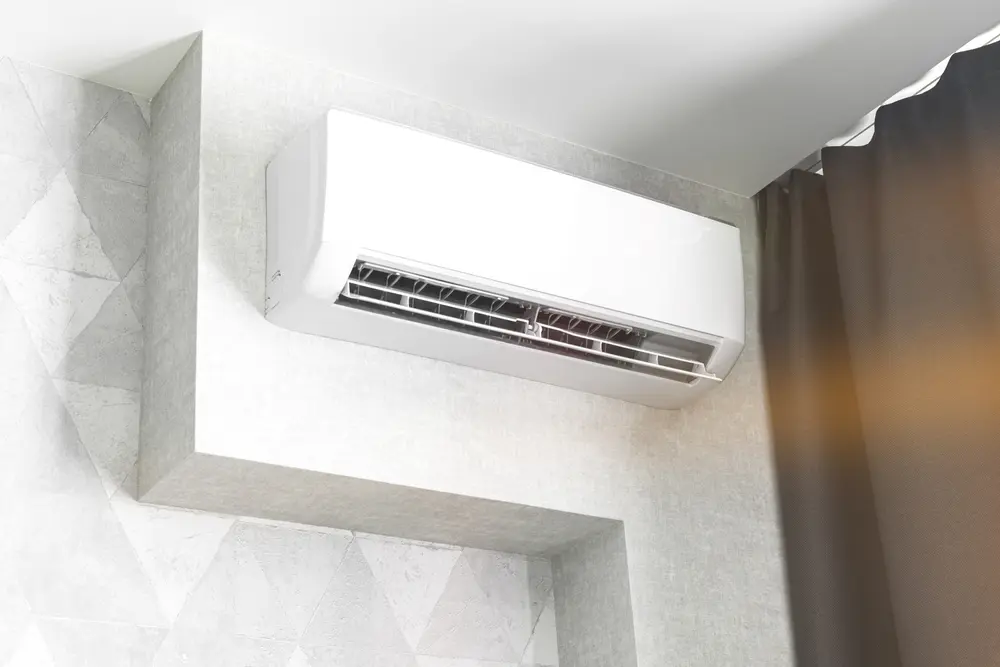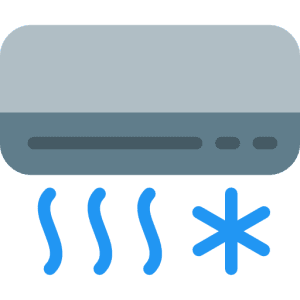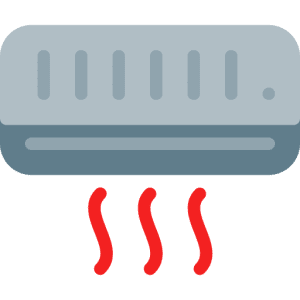What Size Mini-Split Do I Need? A Complete Guide

Making the switch from a traditional HVAC system to a brand new mini-split is a big change. There are plenty of questions you may be asking yourself, like “What mini-split brands are the best?”, “How much is installation going to cost me?”, and “What size mini-split do I need?”
Choosing the right mini-split system can feel overwhelming, especially when terms like BTUs, zones, and square footage are thrown your way. But don’t worry: sizing a ductless mini split is more straightforward than you might think, and getting it right makes a world of difference in comfort and energy efficiency.
In this guide, the HVAC experts at LimRic will walk you through everything from understanding BTUs to common sizing mistakes and installation best practices—so you can make an informed decision for your home.
The Importance of Correctly Sizing a Mini-Split HVAC System
Mini-split systems are popular for their flexibility and energy efficiency. But their performance depends heavily on choosing the correct size.
Choosing the wrong size mini split is kind of like wearing the wrong size shoes. If they are too small, you’re uncomfortable all day; too big, and you’re constantly tripping as you walk around. An undersized unit will struggle to keep up, while an oversized unit cycles on and off so often it ends up wasting energy and wearing out faster.
An accurately sized mini split system delivers:
- Consistent comfort without hot or cold spots
- Higher energy efficiency
- Longer system lifespan
- Lower utility bills
Understanding BTUs in HVAC System Sizing
BTU stands for British Thermal Unit, a unit of measurement for the amount of energy required to heat or cool a space. Mini-split systems are rated by BTUs per hour, and the larger the space, the higher the BTU rating you’ll need.
As a rough rule of thumb, most mini splits require about 20 BTUs per square foot. However, keep in mind that this is just a baseline. Other factors can significantly impact the size of the system you need.
Factors That Affect Mini-Split Sizing
While square footage is the most significant factor, it’s not the only one to think about. Here are other common variables that can impact your BTU requirements:
- Ceiling Height: Taller ceilings increase air volume, requiring more BTUs. Homes with 9-foot or vaulted ceilings need additional capacity to condition the airspace evenly
- Sunlight Exposure: South and west-facing rooms may need more cooling power. These rooms often experience higher afternoon temperatures, making standard BTU estimates insufficient.
- Insulation Quality: Poorly insulated homes lose heat and cool air faster. Without proper insulation, your system will work harder and longer to maintain comfort, often resulting in poor system performance and additional wear and tear.
- Climate Zone: Homes in warmer climates need more BTUs for cooling; colder zones need more for heating. Your mini split should be tailored to handle your region’s seasonal extremes.
- Room Type and Use: Kitchens or rooms with large appliances may need extra cooling capacity. Appliances generate excess heat, increasing the system’s cooling demand.
- Number of Occupants: The more people in your home, the more heat generated. Every additional person contributes body heat that your system must offset.
- Window Size and Type: Older, single-pane windows can increase heat gain or loss. Larger or inefficient windows reduce thermal stability and increase energy demand.
By working with HVAC professionals like the team at LimRic, you can ensure all of these factors are taken into account when sizing your system.

Mini-Split Sizing Chart by Square Footage
Still asking yourself what size mini split you need for a 500 sq ft guest suite or a 1,000 sq ft basement? Use this chart as a starting point for estimating what size mini split you might need based on square footage alone:
| Square Footage | Estimated BTUs Needed |
|---|---|
| 150–250 sq ft | 6,000 BTU |
| 250–300 sq ft | 7,000–8,000 BTU |
| 300–500 sq ft | 9,000–12,000 BTU |
| 500–750 sq ft | 12,000–18,000 BTU |
| 750–1000 sq ft | 18,000–24,000 BTU |
| 1000–1250 sq ft | 24,000–30,000 BTU |
| 1,250–1,350 sq ft | 30,000 BTU |
| 1,350–1,500 sq ft | 36,000 BTU |
| 1,500–2,000 sq ft | 48,000 BTU |
| 2,000–2,500+ sq ft | 60,000 BTU |
This table provides generalized information, so it does not account for factors such as high ceilings or multiple rooms. These numbers are a helpful guideline, but they won’t replace a professional assessment.
To find the right fit for your home–especially if you have vaulted ceilings or other unique design features–it’s best to turn to a professional.
Best Practices for Installing Indoor and Outdoor Units
Even with a right-sized mini split system, poor placement can lead to issues like uneven airflow, hot spots, or wasted energy. Here are some installation best practices that help you achieve optimal performance and efficiency from your system from day one.
Consider Room Size
Each indoor unit in a ductless mini split system is designed to serve a specific zone or room. Ensure the unit installed in each space matches the room’s size and usage. For example:
- A small bedroom or office may only need a 5,000 to 7,000 BTU unit.
- A large living room might require 18,000 BTUs or more.
If a room feels too warm or cool even after installation, it could be a red flag that the unit is undersized or oversized for the space.
Proper Placement
Where you install your mini split indoor and outdoor units matters:
- Indoor units should be mounted high on the wall for optimal airflow, but not too close to the ceiling or a corner.
- Avoid placing them above electronics or heat-producing appliances.
- Outdoor units should be elevated off the ground and placed in a shaded, well-ventilated area to prevent overheating and extend their longevity.
Keeping your units clear of obstructions means they have the space they need to provide consistent performance and even easier access when it’s time for maintenance.
Ensure Accurate System Sizing
The only way to properly size a mini split system is with a professional load calculation. HVAC specialists use tools like Manual J calculations to assess factors such as the local climate, insulation values, window size, and even your home’s layout.
If you’re installing multiple indoor heads or designing a system for a whole home, don’t rely on square footage alone. An expert will recommend unit sizes for each zone based on actual energy needs—not just guesswork.
For an accurate evaluation, connect with the mini-split installation and repair experts at LimRic to schedule a personalized assessment and receive expert recommendations.
Maximize Comfort and Efficiency With a Custom Sizing Assessment
Buying a mini split system based on a sizing chart might work for small, single-room installations—but for whole homes, add-ons, or unique layouts, it pays to go custom.
A professional assessment can help you avoid:
- Overspending on equipment that’s too large
- Under-sizing, which leads to overworked units and higher bills
- Inefficient zoning that leaves rooms unevenly cooled or heated
A well-sized system also enhances your home’s long-term energy efficiency, reducing wear and tear while keeping your family comfortable through every season.
Of course, if you’re still wondering what size mini split you need for your home, you don’t have to figure it out alone. That’s where the experts at LimRic come in. Our team specializes in ductless mini-split solutions tailored to your space, comfort, and energy goals.
From mini-split installation and repair to full-service air conditioning and heating support, we make it easy to find, install, and maintain the ideal system for year-round comfort.
Contact us today to schedule your personalized mini split sizing consultation and take the guesswork out of choosing a system.












